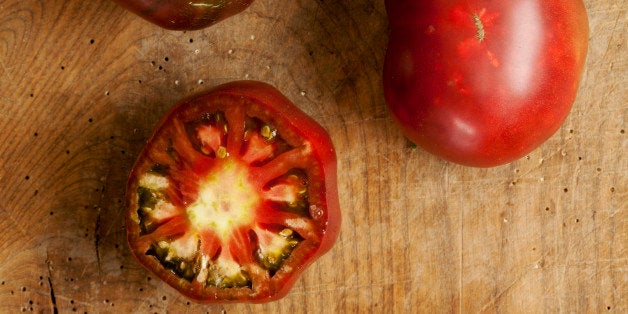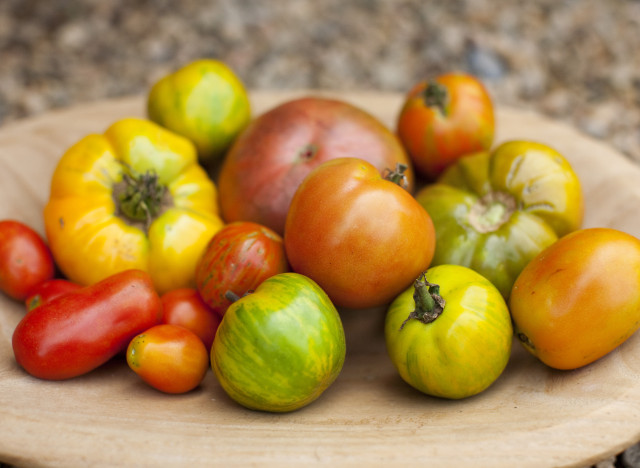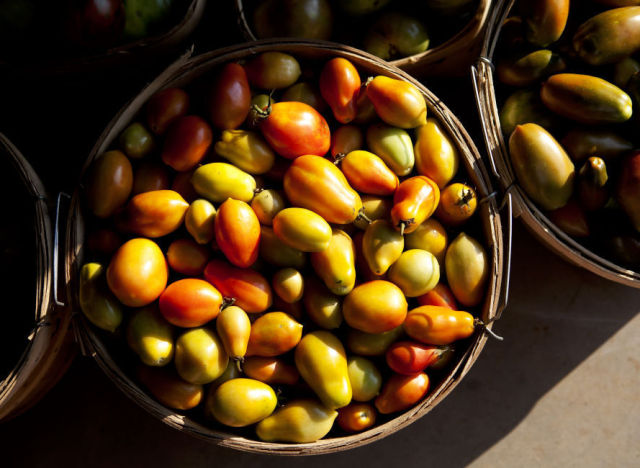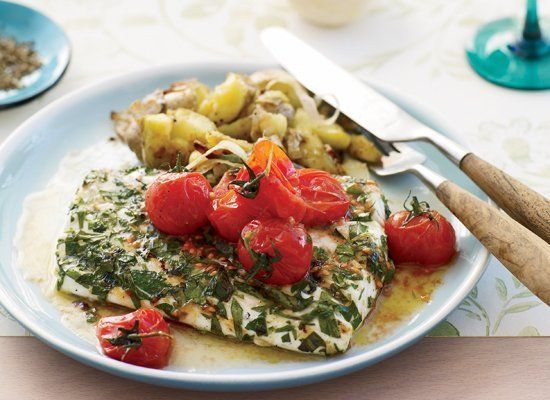
We hate to be the ones to tell you this, but if you've never had an heirloom tomato then you've never tasted a real tomato. With tomato season just upon us -- and dreams of yellow, red, pink and purple slices on our plates -- we began to wonder what it was that made heirloom tomatoes so much better than the conventional ones you can buy at the grocery store any time of year. We know they don't look the same. And we know they cost more. But why?
We turned to expert gardener John Coykendall at the most magical place on earth, Blackberry Farm in Walland, Tennessee, to fill us in on the heirloom-tomato hype. He was gracious enough to give us his time and to answer our questions -- and he perfectly articulated what it is that makes heirloom tomatoes so great, using the best analogies we've ever heard.
***
Let us cut right to the chase: Why are heirlooms better than industrially-grown or hybrid tomatoes?
The answer is simple: The old ones tasted like a real tomato. What we're growing today, I would hardly classify as a real tomato. I suppose they're alive, but the resemblance stops there. We had it right 100 years ago.
One thing is, you get all the subtle differences in heirlooms [that you don't get in the other tomatoes]. Your yellow heirloom tomatoes are milder. And your red heirlooms have a lot more acidic quality. Something interesting of note is that if you look at a canning recipe from the 1930s or 40s, you didn't have to add anything to it; those tomatoes had a very high acid content. Today's tomatoes, all the flavor and taste and everything else has been bred out of it. So, if you look at the latest Ball canning book they've upped the processing time and also recommend you put a couple of tablespoons of lemon juice [to account for that]. There's a big big difference.
We had a lady visit the other day who asked, "What do I do if I want a nice fresh tomato in January? I said, "Go to the store, buy a can of Romas, dump them in your salad bowl and dress it with your salad dressing -- it'll taste 100 percent more like a tomato than what you buy at the store that time of year." It's true -- that's just the way it is. The season is short, but you relish that time that you do have them. They don't last forever. I always tell the guests that tomatoes are like Santa Claus, they don't come but once and year so take it and be thankful. The rest of the time you're going to have to settle on something else that's in season.
I know you've eaten -- probably by mistake -- a winter tomato that has a plastic skin and a styrofoam interior. Yeah, those ones from South Florida, the green ones, the baseball team uses those for batting practice before they head north. You couldn't put a dent in one if you tried.

What else is special about heirloom tomatoes, aside from taste and their unique characteristics?
They're so beautiful. Some of them are solid yellow, some have pink modeling to them. There's one called Mr. Stripey. All of those sliced up together aesthetically speaking make a statement on the plate. They speak for themselves. People always ask when I give a talk if I make notes. And I say I don't have to. If I have beans in front of me on the table each one of them has their own story -- and it's the same with the heirloom tomatoes.
All this talk about heirlooms, can you tell us what qualifies a tomato as an heirloom?
The rule of thumb for any kind of heirloom in the seed world is that something has to be at least 50 years old to be an heirloom. Or it has to be associated with an area, a farm or specific family. I'm an heirloom, plus 21 years.

How did the bland tomatoes at the grocery store become so common place?
In the early days we had farming communities all around us. Even outside NYC, they had the infrastructure for local farming. But that's gone today. The tomatoes they grew in South Florida then had that wonderful flavor, but it was meant to go from the vine right to your dinner table. Those tomatoes won't ship -- the skins are soft and they bruise. They would go to pieces in no time. Now, they make tomatoes to ship. Bred for mechanical harvest, shipping, shelf life, etc.
I'll give you a perfect example of that: we had someone doing an internship with us and she brought some of those tomatoes in. She was going to have them for lunch, but we got busy and she forgot. The next day I made a display out of them with some corn shucks, just different decorations. And I left those there until the end of March. I took everything down and lo and behold those tomatoes were still sitting there. Looked liked something out of King Tuts tomb -- all shriveled up, but it never did rot. A mummified tomato. [That's what they sell at the grocery store.]
Is there a national seal of approval for heirlooms?
[In short, no.] The way of knowing is the taste test. Once you get home and taste it you know you got the real thing. I don't think I've ever seen an heirloom tomato faked -- it either is or it isn't.

